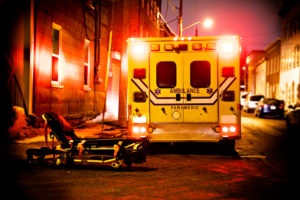During the last week of June 2012, the FDA convened a two-day advisory panel consisting of 18 members to meet and discuss the safety of metal-on-metal (MoM) hip implants. The panel was tasked with reviewing the data and making recommendations concerning the failure rates of these devices, patient risk factors, and considerations for follow-up surgery.
Some were disappointed by the outcome of the meeting, because the panel did not recommend a ban on MOM implants. They did, however, make it clear that in the future surgeons should choose other options when conducting total hip replacement surgery.
A History of Problems with MoM Hip Implants
The panel met on June 27-28 in Maryland, reportedly in response to the growing number of complaints surrounding MoM devices. Whereas other hip implants are made of a combination of materials, such as metal/plastic or metal/ceramic, MoM devices contain all-metal components. When they were initially launched onto the market, they were advertised as being more durable, flexible, and longer-lasting than other options making them a better choice for younger, active patients. Post-marketing reports, however, indicate that patients experienced numerous complications, such as pain, immobility, premature loosening, metal poisoning, and hip device failure.
Since 1999, the FDA has received nearly 17,000 reports of problems with MoM devices. These include: the DePuy ASR hip system, which was withdrawn from the market in 2010; the Zimmer Durom Cup, for which sales were temporarily suspended in 2008; the Biomet M2a Magnum hip; the Wright Conserve family of hip replacement products; and the Smith & Nephew R3 Acetabular system, which was recently taken off the market. Thousands of plaintiffs are involved in litigation against the manufacturers of these hips in courts around the country.
Outcome of FDA Panel Meeting
One of the main conclusions coming out of the two-day FDA panel meeting was that orthopedic surgeons should look for other options when performing total hip replacements. The panel stated that there are few reasons to continue using MoM implants, since growing evidence shows they can break down early and expose patients to dangerous metallic particles (cobalt and chromium).
Other recommendations submitted by the panel to the FDA include:
- Patients complaining of pain and other symptoms should get regular X-rays and blood testing for metal levels.
- Patients not experiencing pain should have annual X-rays to monitor their implant(s).
- Warning labels should be included with MoM implant products alerting physicians and patients to the risk of pseudotumors and high levels of metal ions in the blood.
- Warning labels should be included to state that MoM implant recipients are more sensitive to the devices’ positioning than patients with other types of implants.
- There are no identifiable patient groups for whom MoM devices should be the first choice.
Additional recommendations include what types of testing should be used to determine whether or not the metal implant is shedding metallic debris into surrounding tissues or the bloodstream.
Critics say the panel didn't do enough, and left many questions unanswered. For example, what level of metal ions should trigger concern, and when should MoM devices simply not be used? The panel members urged the FDA to avoid blanket recommendations that fail to take into account the wide variation in performance histories for different devices. Data presented at the meeting, for instance, showed that the problems seem to occur with newer implants that have larger head sizes.
The increasing awareness of problems with MoM implants may have already protected some future patients from experiencing problems. Unfortunately, those who were uninformed in years past have only the possibility of legal recourse to compensate for what are often life-altering injuries.

Exclusively focused on representing plaintiffs, especially in mass tort litigation, Eric Chaffin prides himself on providing unsurpassed professional legal services in pursuit of the specific goals of his clients and their families. Both his work and his cases have been featured in the national press, including on ABC’s Good Morning America.










Comments for this article are closed.